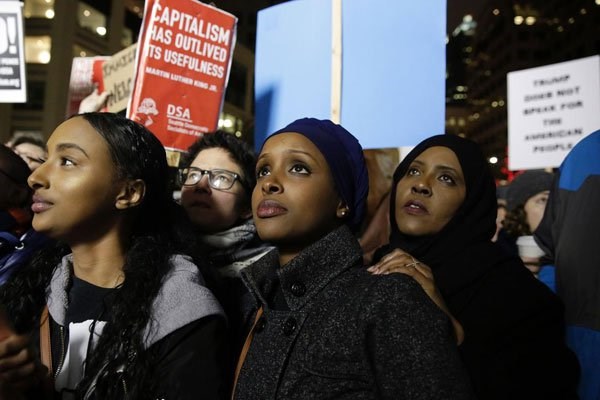Wary Somali refugees pack for trip to US … again

When Aden Bare Farah, 23, first boarded a bus taking him away from the bleak rows of dust-coloured tents where he was born and raised a refugee, there was no looking back.
This time around, he can barely summon the enthusiasm to believe he is finally leaving the ochre sands of Dadaab in arid eastern Kenya, the world’s largest refugee camp, for Pennsylvania in the United States.
Farah is one of scores of Somali refugees who were sent back to the camp last week after US President Donald Trump ordered a ban on travellers and refugees from seven mostly Muslim nations — including Somalia.
“I felt sad and weak. I didn’t know where I belong. I felt I would be stateless forever,” Farah told AFP from Dagahaley, one of several camps inside the complex that houses 256,000 Somali refugees.
His heart sunk as he disembarked again inside the camp where he was born.
His parents were among the first to arrive in the camp built in 1992 to house Somalis fleeing civil war, and which swelled over the decades as new disasters from drought to radical extremists, hit the country.
His father died in 2000 and he was raised by a single mother who, along with him, spent eight years undergoing vetting for resettlement.
“I was very joyful as I took my bag to board the bus for Nairobi where I would stay for a week and then, home.
“I call Pennsylvania home,” he said laughing. “I wish Trump knew that.”
WAIT AND SEE
After hearing the bad news he switched off his phone, unable to bear speaking to his friends in the camp, having to admit defeat.
“I was depressed. I didn’t have an appetite to eat or do anything else.”
Now, several days later, he has once again been told he will be getting on a bus to Nairobi by the end of this week, after a federal judge barred enforcement of the controversial measure, allowing several refugees to once again enter the United States.
“I think we can go back now, but let us see how it goes,” he said warily.
With a US appeals court due to hold a hearing on the ban on Tuesday, the refugees may be right not to get their hopes up yet.
“I am happy but not too happy until I land in the USA because who knows what will happen in the coming days,” said Halimo Dakan, 72, also one of the camp’s original residents.
She, her husband and six children happily sold all of their belongings in the run-up to their move to Ohio.
Returning to Dadaab was a “journey full of sorrow” for the family and Dakan cannot even imagine the prospect of their resettlement being cancelled for good.
“Life in a Kenyan refugee camp is extremely hard. No work, there is little food and we are not allowed to move freely within Kenya. Life in Dadaab is not permanent.”
NO ONE KNOWS SOMALIA
The International Organisation for Migration refused AFP requests for details on how many Somali refugees were being sent back and forth.
According to the US State Department’s Refugee Processing Centre (RPC) website, nearly 11,000 Somali refugees were resettled in the US in 2016.
As it is the camp’s residents are facing an uncertain future.
Kenya is pushing to close the sprawling camp near the Somali border over security concerns, claiming Dadaab acts as a terrorist training ground for Shabaab Islamists — who have targeted Kenya since it sent troops into Somalia in 2011.
Kenya claims both the 2013 attack against Nairobi’s Westgate shopping mall and the 2015 attack at Garissa University were planned at Dabaab.
Initially set for November last year, the closure was delayed to May this year.
The move has received stiff criticism from rights groups who accuse the government of seeking to return refugees to Somalia against their will, to face persecution and hunger.
While parts of the Horn of Africa nation are still under control of Al-Qaeda-linked Al-Shabaab militants, the country is also facing its worst drought since a 2010-11 famine left some 250,000 dead.
Over six million people require food aid, half of whom are bordering on starvation, aid agencies have warned.
Dakan described the prospect of returning to Somalia, if the US ban holds and Kenya forces them out, as simply “horrible”.
“There is Al-Shabaab. They will kill my children and recruit them. We don’t belong in Somalia, we don’t have house or land. No one knows Somalia, my husband and I left in 1991.”
AFP